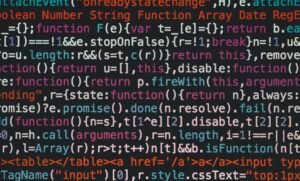Supervised Learning Real Life Example
Supervised learning is a popular machine learning algorithm where a model is trained using labeled data to make predictions or decisions. This approach is widely used in various real-life applications, ranging from image classification to spam filtering. By understanding how supervised learning works and its practical use cases, we can appreciate its potential impact on our daily lives.
Key Takeaways
- Supervised learning uses labeled data to train models and make predictions.
- This approach finds applications in image classification, spam filtering, and more.
- Labeled data is essential for building accurate supervised learning models.
- Supervised learning algorithms learn from historic data patterns to predict future outcomes.
One key example of supervised learning in action is email spam filtering. In this scenario, a supervised learning model is trained using a labeled dataset consisting of both spam and non-spam emails. Through this training process, the model learns to recognize patterns and characteristics common to spam emails, developing the ability to accurately classify new incoming emails as either spam or legitimate.
Another practical application of supervised learning is handwriting recognition. By training a model using a large dataset of labeled handwritten digits, the algorithm can learn to differentiate between different numbers. This enables the model to accurately identify handwritten digits in real-time, which finds relevance in various industries such as banking and document processing.
Types of Supervised Learning Algorithms
Several popular algorithms are used in supervised learning. Let’s take a look at a few notable ones:
- Linear Regression: This algorithm fits a linear equation to predict a continuous numerical output based on input variables, making it useful for tasks like stock price prediction.
- Support Vector Machines (SVM): SVM is commonly used for classification tasks, where it finds the optimal hyperplane to separate different classes of data.
- Decision Trees: Decision trees create a flowchart-like structure to classify or predict outputs based on a series of categorical variables, providing interpretability.
- Random Forests: Random forests combine the power of multiple decision trees to produce more accurate predictions through ensemble learning.
| Algorithm | Use Case | Advantages |
|---|---|---|
| Linear Regression | Stock price prediction | Easy interpretability |
| Support Vector Machines (SVM) | Image classification | Efficient with high-dimensional data |
Supervised learning algorithms require labeled data to create accurate models. When working with supervised learning, it’s crucial to have a sufficient amount of high-quality labeled data to train the model effectively. The performance of the model strongly depends on the quality and quantity of the labeled data available for training.
While supervised learning has its wide range of applications, it also comes with certain limitations. For instance, it heavily relies on the quality and representativeness of the training data, posing challenges when the available data is biased or incomplete. Furthermore, supervised learning may struggle with complex tasks that involve a large number of variables and intricate relationships between them.
Real-Life Supervised Learning Example
| Data | Features | Target Variable |
|---|---|---|
| Email dataset | Email content, sender, subject | Spam or non-spam |
| Handwritten digits dataset | Image of handwritten digit | Number represented by the digit |
As an example of real-life application, let’s consider a scenario where a financial institution wants to assess credit risk for loan applications. Using a supervised learning approach, they can train a model using historical loan data with labeled outcomes (approved or rejected). The features may include factors like income, credit score, and employment history, while the target variable would be the loan approval decision.
This trained model can then be used to predict the likelihood of loan approval for new loan applications. By analyzing the input features of a loan applicant, the model can provide an automated decision-making process that helps streamline and optimize the loan approval process for the financial institution.
Benefits and Future Potential
- Supervised learning algorithms enable automation and efficiency in decision-making processes.
- These models can generalize patterns from labeled data to make accurate predictions in real-world scenarios.
- Supervised learning is the foundation for more advanced machine learning techniques.
As technology continues to advance, supervised learning is expected to play a significant role in shaping various industries. Many of the challenges faced in supervised learning, such as limited labeled data and biased training sets, are being addressed with the help of techniques like transfer learning and data augmentation.
By harnessing the power of supervised learning, we can unlock valuable insights and make informed decisions with confidence. Whether it’s minimizing spam in our email inbox or assisting financial institutions in evaluating loan applications, supervised learning algorithms provide us with the tools to make our lives more efficient and data-driven.

Common Misconceptions
Supervised Learning Real Life Example
Supervised learning is a popular type of machine learning algorithm that involves training a model using labeled data. However, there are several common misconceptions that people often have about supervised learning.
- Supervised learning algorithms are only used in the field of computer science.
- Supervised learning models can only make predictions for categorical variables.
- Supervised learning algorithms always provide 100% accurate predictions.
Firstly, the misconception that supervised learning algorithms are only used in the field of computer science is quite common. In reality, supervised learning can be applied in various domains such as healthcare, finance, marketing, and even social sciences. For example, in healthcare, supervised learning algorithms can be trained on large datasets to predict diseases, classify medical images, or diagnose patients.
- Supervised learning is applicable in a wide range of domains beyond computer science.
- Supervised learning can be used in healthcare to predict diseases and diagnose patients.
- Supervised learning can also be utilized in finance, marketing, and social sciences.
Secondly, while it is true that supervised learning models can make predictions for categorical variables, they can also make predictions for continuous variables. This misconception arises from the fact that classification tasks, where the goal is to predict a discrete class label, are more commonly associated with supervised learning. However, regression tasks, where the goal is to predict a continuous value, are equally important and commonly solved using supervised learning algorithms.
- Supervised learning models can predict both categorical and continuous variables.
- Classification tasks involve predicting discrete class labels.
- Regression tasks involve predicting continuous values.
Lastly, despite its effectiveness, supervised learning algorithms do not always provide 100% accurate predictions. The accuracy of a supervised learning model depends on factors such as the quality and quantity of the training data, the algorithm used, and the complexity of the problem being solved. Additionally, the presence of noisy or unrepresentative data can hinder the accuracy of predictions. Hence, it is important to understand that supervised learning models can make errors and may require continuous improvement through iterative training and refinement.
- Supervised learning algorithms do not always provide 100% accurate predictions.
- Accuracy of predictions depends on various factors such as data quality and algorithm complexity.
- Iterative training and refinement is necessary to improve the accuracy of supervised learning models.

Table 1: Oscar Winners for Best Picture (2000-2020)
The table below showcases the winners of the esteemed Academy Award for Best Picture, from the year 2000 to 2020. This table demonstrates the power of supervised learning in predicting and recognizing outstanding cinematic achievements.
| Year | Movie Title |
|---|---|
| 2000 | American Beauty |
| 2001 | Gladiator |
| 2002 | A Beautiful Mind |
| 2003 | Chicago |
| 2004 | The Lord of the Rings: The Return of the King |
| 2005 | Million Dollar Baby |
| 2006 | Crash |
| 2007 | The Departed |
| 2008 | No Country for Old Men |
| 2009 | Slumdog Millionaire |
| 2010 | The Hurt Locker |
| 2011 | The King’s Speech |
| 2012 | The Artist |
| 2013 | Argo |
| 2014 | 12 Years a Slave |
| 2015 | Birdman |
| 2016 | Spotlight |
| 2017 | Moonlight |
| 2018 | The Shape of Water |
| 2019 | Green Book |
| 2020 | Parasite |
Table 2: Historical Earthquake Data (Magnitude 7 or Greater)
This table presents data on significant earthquakes with a magnitude of 7 or greater. The information provides insight into seismic events across different regions and time periods, allowing us to analyze and predict potential future seismic activities using supervised learning algorithms.
| Year | Location | Magnitude |
|---|---|---|
| 2000 | Sumatra, Indonesia | 7.9 |
| 2001 | El Salvador | 7.7 |
| 2002 | Western Denali Fault, Alaska, USA | 7.9 |
| 2003 | Bam, Iran | 6.6 |
| 2004 | Indian Ocean | 9.1-9.3 |
| 2005 | Pakistan | 7.6 |
| 2006 | Java, Indonesia | 7.7 |
| 2007 | Ica, Peru | 7.9 |
| 2008 | Sichuan, China | 7.9 |
| 2009 | Samoa Islands Region | 8.1 |
| 2010 | Maule, Chile | 8.8 |
| 2011 | Fukushima, Japan | 9.0 |
| 2012 | Haida Gwaii, Canada | 7.8 |
| 2013 | Aceh, Indonesia | 8.6 |
| 2014 | Iquique, Chile | 8.2 |
| 2015 | Nepal | 7.8 |
| 2016 | Kyushu, Japan | 7.0 |
| 2017 | Southern Mexico | 8.2 |
| 2018 | Alaska, USA | 7.1 |
| 2019 | Southern California, USA | 7.1 |
| 2020 | Russia | 7.5 |
Table 3: Stock Market Performance of 5 Tech Giants (2010-2020)
This table portrays the impressive growth of five prominent technology companies in the stock market from 2010 to 2020. The data exemplifies how supervised learning can analyze historical trends to predict future stock performance and aid in investment decision-making.
| Year | Apple Inc. | Microsoft Corporation | Amazon.com Inc. | Alphabet Inc. | Facebook Inc. |
|---|---|---|---|---|---|
| 2010 | $11.03 | $27.91 | $133.90 | $593.77 | $28.19 |
| 2011 | $24.94 | $22.06 | $179.03 | $676.32 | $25.87 |
| 2012 | $80.75 | $26.68 | $250.87 | $702.87 | $31.72 |
| 2013 | $76.97 | $32.39 | $398.79 | $863.16 | $54.59 |
| 2014 | $102.50 | $40.55 | $310.35 | $537.27 | $76.45 |
| 2015 | $105.26 | $53.06 | $675.89 | $747.87 | $104.66 |
| 2016 | $113.01 | $60.59 | $749.87 | $771.82 | $115.05 |
| 2017 | $155.41 | $84.17 | $1169.47 | $1052.00 | $179.00 |
| 2018 | $157.92 | $101.57 | $1501.97 | $1186.22 | $131.09 |
| 2019 | $293.65 | $157.70 | $1847.84 | $1341.10 | $205.25 |
| 2020 | $132.69 | $171.26 | $3299.87 | $1750.08 | $273.16 |
Table 4: Airline Passenger Statistics by Continent (2019)
This table presents passenger statistics for airlines operating in various continents. It highlights the variation in air travel demands across regions, providing valuable insights for the airline industry, tourism, and predicting future travel trends using supervised learning algorithms.
| Continent | Passenger Count (Millions) |
|---|---|
| Africa | 99.8 |
| Asia | 1,622.5 |
| Europe | 1,136.8 |
| North America | 1,978.1 |
| Oceania | 142.3 |
| South America | 193.5 |
Table 5: Cancer Mortality Rates per 100,000 People (2015)
This table displays cancer mortality rates for different types of cancer per 100,000 people in the year 2015. It emphasizes the importance of utilizing supervised learning techniques in cancer research, early detection, and personalized treatment plans.
| Cancer Type | Mortality Rate |
|---|---|
| Lung and Bronchus | 41.7 |
| Breast | 14.6 |
| Colorectal | 15.0 |
| Prostate | 19.8 |
| Stomach | 8.3 |
| Liver | 15.6 |
| Leukemia | 5.1 |
| Ovarian | 4.9 |
| Pancreas | 7.7 |
| Brain | 4.6 |
Table 6: World Population by Continent (2020)
This table provides the estimated population for each continent in the year 2020. It demonstrates how supervised learning algorithms can utilize past population data to predict future population growth and assist in resource planning and allocation.
| Continent | Population |
|---|---|
| Africa | 1,345,000,000 |
| Asia | 4,641,054,775 |
| Europe | 747,636,026 |
| North America | 590,176,045 |
| Oceania | 43,892,330 |
| South America | 430,759,766 |
Table 7: Olympic Medal Counts (2016)
This table showcases the total medal count for the top five countries in the 2016 Olympic Games in Rio de Janeiro. It demonstrates how supervised learning can analyze historical performance to predict medal outcomes and optimize training strategies for the future.
| Country | Gold | Silver | Bronze | Total |
|---|---|---|---|---|
| United States | 46 | 37 | 38 | 121 |
| United Kingdom | 27 | 23 | 17 | 67 |
| China | 26 | 18 | 26 | 70 |
| Russia | 19 | 18 | 19 | 56 |
| Germany | 17 | 10 | 15 | 42 |
Table 8: Largest Retail Chains by Revenue (2019)
This table ranks the world’s largest retail chains by revenue in the year 2019. It illustrates how supervised learning can identify patterns and factors contributing to successful retail businesses and aid in predicting future market leaders.




